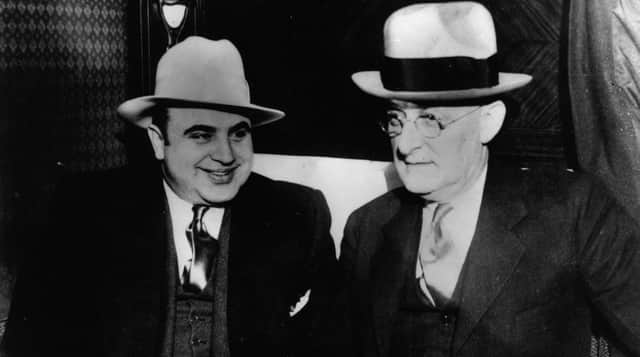St Valentine's Day Massacre: the notorious Chicago mass murder ordered by Al Capone explained


Valentine’s Day is celebrated worldwide as a day of love, yet its past is not so sweet.
Ninety two years ago, one of the most infamous massacres in United States history took place on 14th February.
Advertisement
Hide AdAdvertisement
Hide AdRemembered as the St. Valentine’s Day Massacre, seven mafia men were murdered on a dark winter morning in Chicago.
Here’s everything you need to know.
When was the St Valentine’s Day Massacre?
The notorious massacre played out on 14 February 1929.
It was the culmination of a mafia war between arch rivals Al Capone and Bugs Moran.
George “Bugs” Moran was an Irish career criminal who ran the North Side gang in Chicago in the 1920s.
His gang fought with “Scarface” Al Capone’s for control of smuggling, trafficking and prostitution in the city during the bootleg era.
Both mafia bosses survived several attempted murders throughout the decade - one infamous occasion being when Moran and his gang members drove six cars past an Illinois hotel where Capone and his associates were dining and shot at the building with more than 1,000 bullets.
What happened?
Capone had a $50,000 bounty on his head when he called for Moran’s gang to be disposed of.
On 14 February, Valentine’s Day, a delivery of bootleg whisky was expected at Moran’s North Clark Street garage headquarters in Chicago.
Four men, disguised as police officers, entered the building.
Advertisement
Hide AdAdvertisement
Hide AdMoran was late and saw them go in, waiting outside as he thought his associates were being arrested in a raid.
However, little did he know that the disguised men had lined seven of Moran’s gangsters against the wall, opened fire and shot them.
Who was murdered?
The murdered men included Moran’s best gunmen, Frank and Pete Gusenberg.
Frank was reported to still be alive when real policemen found the scene.
Yet, when asked who had shot him, he kept his code of silence saying: “No one. Nobody shot me.”
Police could find only a few eyewitnesses, but eventually concluded that gunmen dressed as police officers had pretended to be arresting the men and then had shot them.
Moran blamed the massacre on Capone’s gang, but the infamous gangster claimed to have been at his home in Florida when the murders happened.
What happened next?
No one was ever brought to trial for the murders and the St. Valentine’s Day Massacre remains one of the biggest unsolved crimes in history.
Advertisement
Hide AdAdvertisement
Hide AdThe bloody incident ended up being the last confrontation between the two rival gangs.
Two years later, Capone was jailed for tax evasion, and Moran had lost so many important associates that he could no longer control his Chicago territory.
On the seventh anniversary of the massacre, in 1936, one of the assassins Jack McGurn was shot in a bowling alley by machine-gun fire.
Although McGurn’s killer remains unknown, many believe it was Moran.
However, the mafia boss was never charged with the murder and he continued to carry out small-time robberies until he was sent to prison in 1946.
He died in Leavenworth Federal Prison in 1957 of lung cancer.
How did Al Capone die?
Al Capone was diagnosed with syphilis, a sexually transmitted disease, while serving his 11-year sentence for tax fraud.
Following his transfer to Alcatraz in 1934, he began to show signs of confusion and disorientation and was diagnosed with neurosyphilis, an infection of the central nervous system.
Advertisement
Hide AdAdvertisement
Hide AdHe was subsequently moved to the prison’s hospital wing until he was granted parole in 1939, partially due to his mental state.
After his release, Capone moved to Palm Island in Florida where he spent the rest of his life.
Even though he was prescribed the antibiotic penicillin to treat his syphilis, which helped to slow the disease, the damage to his brain was severe and he was deemed by medical experts to have the mental capacity of a 12-year-old.
Capone had a stroke in January 1947, contracted a form of pneumonia and then suffered a cardiac arrest.
He died a few days later on 25 January from apoplexy (internal bleeding) at the age of 48.
